School colors have long served as a way for students, alumni and fans to show allegiance to their schools. Various color schemes appear on the flag flown on game day, are shouted as a rally call, or are shown and written on a favorite T-shirt, bringing supporters together as a community to say "we've got spirit!" But these colors are more than a way to tell if a stranger deserves a high five or heckling on game day; they, along with traditional trademarks, are part of universities' licensing portfolios that brought in total royalty revenues of $209 million in 2013.1.
A 2008 Fifth Circuit decision has lent further support to the position that school colors are protectable as trademarks, particularly when they are shown with some indicia pointing to or suggesting the school.2. The case arose when Louisiana State University, the University of Oklahoma, Ohio State University, the University of Southern California, along with the schools' licensing agent, sued Smack Apparel Company for selling unlicensed t-shirts. The apparel did not mention the schools by name, but featured the schools' color schemes and additional unregistered indicia of the schools and their sports teams.
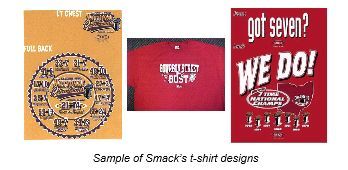
The schools claimed protectable trademark rights in their unregistered color combinations "especially when used in connection with other indicia identifying or suggesting the schools." The parties agreed that an unregistered color scheme could be protected as a trademark if it had acquired secondary meaning and was not functional. A mark acquires secondary meaning when its primary significance, as understood by the consumers, is to identify the source of the product. After considering factors including the length and manner of use of the marks, the volume of sales associated with the marks, the amount and manner of advertising, and the defendant's intent in copying the marks, both the District Court and the Fifth Circuit Court found that the schools' color combinations in conjunction with other indicia had acquired secondary meaning.4.
Ultimately, Smack's t-shirt designs were found to infringe the trademark rights of the universities. Based on factors including the similarity of the marks, the similarity of the products, identity of retail outlets and purchasers, the intent of the defendant, and the degree of care exercised by potential purchasers, the court held that Smack's use of the marks was likely to cause confusion in the minds of potential customers.5. Specifically, the court found that potential customers would be confused into thinking that the universities were the source of, or otherwise affiliated with or sponsored, the Smack t-shirts.
Notably, many schools have not registered their color schemes apart from their use with other indicia of the school. Understandably, it may be difficult for some schools to obtain federal registrations because so many schools, as well as general apparel manufacturers, use similar color combinations. For example, an analysis of NCAA Division I schools found that variations of red and white are the most commonly used school colors in the college football conferences.6. As such, any attempt to register merely the color combination of red and white in international class 25 for apparel would likely face strong objection and/or rejection. Another option would be for schools to adopt more distinctive color combinations like the original colors adopted by Syracuse University: pink and pea green.7. However, this is not likely a viable option because many Universities' colors are steeped in meaning and century old tradition, not to mention the need to acquire secondary meaning in a new color scheme.
Nonetheless, universities continue to register and enforce trademarks such as logos and designs. One example being Ohio State University's trademark registration depicting silhouettes of men spelling out "OHIO" with their arms (US Reg. No. 4297349). The university sued an online t-shirt manufacturer for making and selling t-shirts designed by customers that included the same "OHIO" silhouette. The case has not yet been decided. Ohio State University has also trademarked the names of its colors "Scarlet & Gray" for use on hats, shirts, and t-shirts (US Reg. No. 3173656). The school has also applied to register its football coach's name "Urban Meyer" for clothing items (US Serial No. 86329914).

Ohio State is not the only university getting creative with its trademark registrations. Boise State University registered the color blue as applied to artificial turf in a stadium (US Reg. No. 3707623).
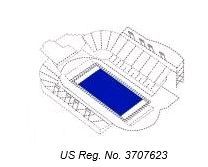
Arizona State University, the University of Miami, and the University of Texas have all registered depictions of human hands making various gestures.
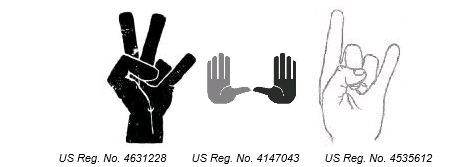
It is clear that a registered trademark cannot be used by a third party without risking infringement. After the Smack decision, it is equally clear that unregistered school color combinations used in conjunction with indicia of that same school cannot be used without risking infringement. What remains to be seen is how far a school's trademark rights extend, namely how tenuous can the additional indicia be and still constitute trademark infringement. For example, the following t-shirt designs were generated on a customizable t-shirt website using generic football symbols provided by the website. While the shirts all use the color combinations of famous universities, without more it is hard to tell if this fan is a Hoosier, Cornhusker, Buckeye, or Badger.
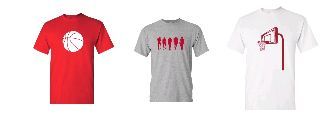
The question remains whether school colors, standing alone, can be protected under trademark law. The general requirement for protecting color as a trademark is that the color(s) must be sufficiently distinctive to indicate the source of the associated goods or services. Additionally, it must be proven that the colors have a secondary meaning, i.e. that consumers of the goods recognize the colors as indicating the associated school, and that the colors are not "aesthetically functional". For example, the TTAB recently denied registration for the color black as applied to floral arrangements and packaging for being aesthetically functional, noting that there exists a strong competitive need to use that color throughout the floral industry in order to convey a particular message to the recipient of the flowers, such as condolences in the context of funerals.8.
Universities in Michigan have not yet ventured too far into the field of registering their non-traditional trademarks, i.e. colors and sounds. Michigan State University has "four primary visual marks," a Michigan State University word mark (US Reg. No. 1344639), a university seal, a block "S", and a Spartan helmet.9
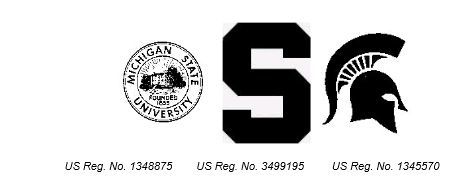
A search of the U.S. trademark database shows that the Board of Trustees of Michigan State University owns a total of seventeen live registrations for various goods and services including educational and entertainment services, clothing, and agricultural products. Rival University of Michigan is the clear winner in the "trademark competition" as the Regents of the University of Michigan own sixteen non-registered trademarks10 and fifty-eight live registrations including block "M" logos, a winged football helmet logo, and word marks for the University's football stadium the "BIG HOUSE" (US Reg. Nos. 2382434 & 2409935) and for the University's mascot the "WOLVERINES" (US Reg. No. 2357021).

While not having registered color or sound marks, University of Michigan does have trademarks that incorporate the names of its school colors including "MAIZE RAGE" (US Reg. No. 2683625) and "M GO BLUE" (US Reg. No. 2781716) both for collegiate athletic exhibitions and games. The University also has a trademark for "Hail to the Victors," (US reg. No. 4022444) the famous words from the University's fight song, registered for T-shirts and collegiate athletics.
It remains to be seen whether more schools will start registering non-traditional symbols of the schools and athletic programs, such as chants and gestures. Someday soon, university marketing trail blazers will attempt to forge a new path at the Trademark Office by registering the University colors themselves, which would require specifying the exact colors and then proving the colors have secondary meaning.
While it is not clear where the line is when it comes to protecting school colors alone as trademarks, it is clear that trademarks are no longer limited to words and logos. Trademark owners including universities are taking note and getting more and more creative with their source identifiers. In the meantime, these authors will stay true to our schools, regardless of trademark protection - Go BLUE! Go GREEN!
Footnotes
1. Darren Heitner, Sports Licensing Soars To $698 Million In Royalty Revenue, Forbes (June 17, 2014), http://www.forbes.com/sites/darrenheitner/2014/06/17/sports-licensing-soars-to-698-million-in-royalty-revenue/.
2. Bd. of Supervisors for La. State Univ. Agric. & Mech. College v. Smack Apparel Co, 550 F.3d 465, 471 (5th Cir. La. 2008).
3. Id. at 473.
4. Id. at 476-77.
5. Id. at 478.
6. College Football Conferences, ESPN College Football, http://espn.go.com/college-football/conferences (last visited Feb. 17, 2015).
7. Syracuse University History: Why Orange?, Syracuse University Archives, http://archives.syr.edu/history/orange.html (last visited Feb. 16, 2015).
8. In re Florists' Transworld Delivery, Inc., 106 USPQ2d 1784 (TTAB 2013).
9. MSU Brand Toolkit, Michigan State University Communications and Brand Strategy, http://cabs.msu.edu/toolkit/logos-marks.html (last visited Feb. 17, 2015).
10. Usage Policies: Registered Marks, Global Communications University of Michigan, http://vpcomm.umich.edu/brand/usage-policies/registered-marks (last visited Feb. 17, 2015).
This article is intended to provide information of general interest to the public and is not intended to offer legal advice about specific situations or problems. Brinks Gilson & Lione does not intend to create an attorney-client relationship by offering this information and review of the information shall not be deemed to create such a relationship. You should consult a lawyer if you have a legal matter requiring attention. For further information, please contact a Brinks Gilson & Lione lawyer.


